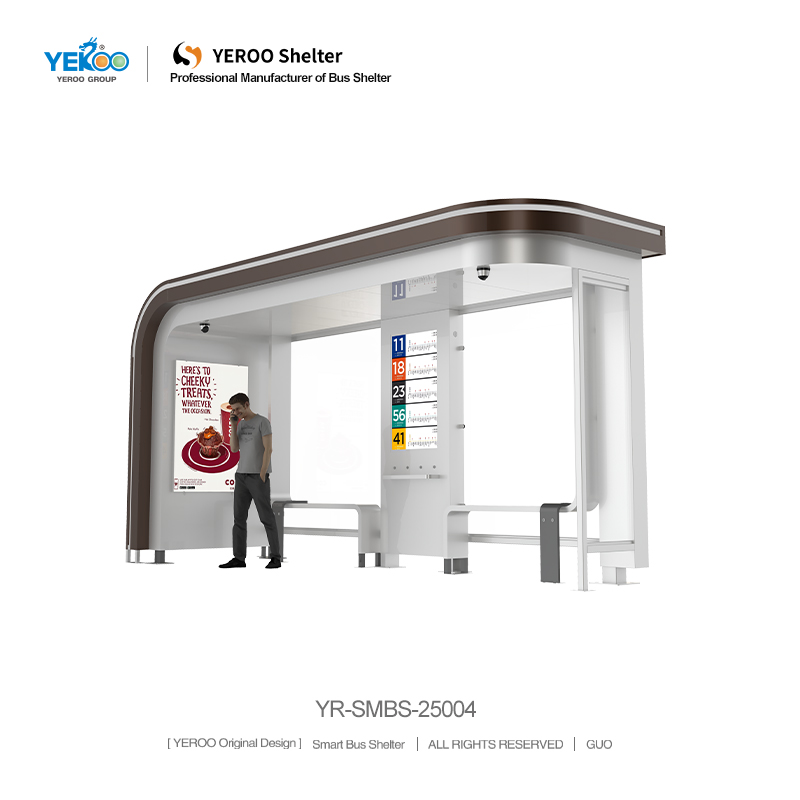How Does Innovative Bus Shelter Design Improve Passenger Experience
Bus stops are not just places where passengers wait; they also significantly influence the experience of the entire public transport system. Shelters offer comfort and safety while they are waiting and, therefore, increase the convenience of public transport. This also encourages a shift from private to public transport. As a result, there will be less traffic congestion and more sustainable urban development.

Protection from Weather Conditions
The most evident advantage of modern design bus shelters is protection from harsh weather conditions. Passengers wait outdoors for long periods, sometimes in extreme weather. A modern bus shelter, for example, provides shaded areas, protection from the rain, and guards against cold winds. These additions enhance comfort for passengers, thus making public transport more appealing, even in unfavorable weather conditions.
Integration of Modern Materials
Modern bus shelters used to be made of weaker materials, including plastic and aluminum. Today, tempered glass, stainless-steel, and high-grade aluminum offer more durable options. These modern bus shelters not only enhance the overall willingness to use public transport, but are also resistant to corrosion and simple to clean. Transparent glass enhance safety alongside the aluminum, which provides a clean and modern style while blending seamlessly into contemporary towns and cities.
Convenient Integration of Technology
The use of technology offers better experiences for passengers. Some of the new bus shelters come with digital screens displaying the exact times for bus arrivals. Some even offer Wi-Fi, charging ports, and smart lights that change brightness according to how much daylight there is. These devices transform waiting from a passive, static experience to a more active, engaging experience.
Improving Safety and Security
Public transport safety is both vital and challenging. Modern bus shelters come with better safety features like strategic bus stop construction with better, smart digital and traditional lighting, security cameras, and bus stop shelters with unobstructed views to aid the passengers. Passengers alongside the bus stop is also safer. Smart lighting also brightens during the night, preventing unwanted crime and accidents.
Reducing Energy Consumption and Sustainability
Modern bus shelters are increasingly employing environmentally sustainable strategies like the use of solar panels to power LED lights and video screens. The use of construction materials with a lower energy consumption during bus shelters boosts the shelters sustainability further. The overall aim of reducing the city’s carbon footprint supports the green city initiatives. The made eco-friendly choice improves the public transport image. The public transport is seen as a responsible option that actively seeks to better the environment.
Comfort and Accessibility for All
Every member of the community, including the elderly and disabled, should be catered for at a bus shelter. Innovative constructions have been made that include ramps, wide entry points, and ergonomically designed chairs and benches which provide easier waiting for everyone. Seat arrangements and waiting areas have also been made to be more comfortable and welcoming for all.
Aesthetic Contribution to Urban Design
Lastly, bus shelters are elements of the city that are considered visible. Their thoughtful placement helps enhance a city’s beauty and identity. As with other city structures, their design should be functional while also blending in with the rest of the modern structures that showcase the city’s beauty.
Conclusion
With the use of modern technology, materials, and sustainable designs, the strategically placed modern bus shelters under construction today have the ability to transform their location into a transit hub. These facilities shift the focus away from just serving as waiting spots to ensuring passengers have a seamless and pleasant experience while offering shelter, safety, and comfort. Bus shelters should not just be considered transit facilities, but rather the cornerstone of modern urban mobility that will help more people transition to public transport.


